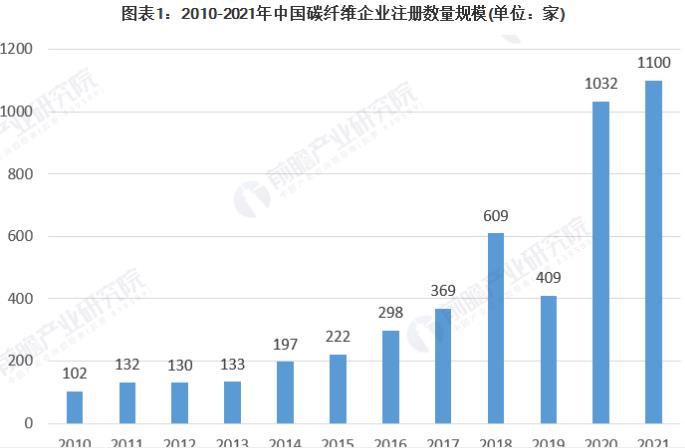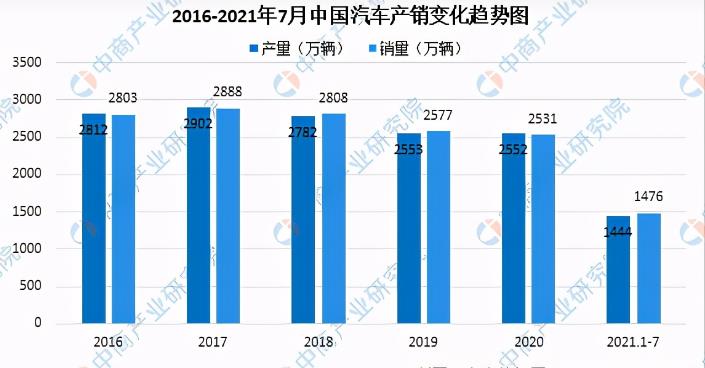Carbon fiber replaces glass fiber, or glass fiber replaces carbon fiber? Whose world will the future be
Carbon fiber composite, prospective industry research institute, China business information network, Xianji network / Xing Xiuyan / 2022-04-11 13:36:23
Carbon fiber and glass fiber are commonly used reinforcing materials. In the process of practical application, they are mostly used in composite materials made of resin and metal. Today, Xiaobian will introduce the difference between carbon fiber and glass fiber.
Glass fiber * * * is the older of the two materials. It is extruded at high temperature and high pressure, and then the obtained material wire is combined with epoxy resin to make the so-called fiber reinforced composite (FRP). Carbon fibers consist of long chains of carbon atoms bound together. Thousands of fibers are then combined into tow (also known as bunched fiber bundle). These tows can be woven together to form a fabric, or they can be tiled to form a "unidirectional" material. At this stage, it is combined with epoxy resin to make products ranging from pipes and tablets to racing cars and satellites.
What is the difference between carbon fiber and glass fiber?
Interestingly, raw glass fibers and carbon fibers show similar processing characteristics. If you have black stained glass fibers, they also look very similar. You don't begin to see the difference between the two materials until the manufacturing is completed: strength, stiffness and a small amount of weight (carbon fiber is slightly lighter than glass fiber). As to whether one is better than the other, the answer is "no". Both materials have their advantages and disadvantages, depending on the application.
rigidity
Glass fiber is often more flexible and cheaper than carbon fiber. For applications that do not require * * * high stiffness - such as tanks, building insulation, protective helmets and body panels - fiberglass is * * * material. Fiberglass is also often used in mass applications where low unit costs are a priority.
strength
Carbon fiber really shines in tensile strength. As the original fiber, it is only slightly stronger than glass fiber, but it will become very strong when combined with appropriate epoxy resin. In fact, if made in the right way, carbon fiber is stronger than many metals. That's why manufacturers of everything from aircraft to ships are using carbon fiber instead of metal and glass fiber alternatives. Carbon fibers allow for greater tensile strength with lighter weight.
durability
When durability is defined as "toughness", glass fiber is clearly the winner. Although all thermoplastic materials are tough, the ability of glass fibers to withstand greater penalties is directly related to their flexibility. Carbon fiber is certainly harder than glass fiber, but this rigidity also means that it is not so durable.
price
Over the years, the market of carbon fiber and glass fiber pipes and plates has increased sharply. Having said that, glass fiber materials have a wider range of applications, resulting in more glass fibers and lower prices. Adding to the price difference is that manufacturing carbon fiber is a difficult and time-consuming process. In contrast, it is relatively easy to extrude molten glass to form glass fibers. Like anything else, the more difficult the process is, the more expensive it is.
Application and market scale of carbon fiber
Most of the manufacturers engaged in the research, production and equipment manufacturing of carbon fiber composite products in China are engaged in sports and leisure products, some are engaged in the research and production of high-end carbon fiber composite materials such as aerospace, and some are engaged in the production of carbon fiber composite materials by filament winding and pultrusion molding process. At present, China's carbon fiber is in a period of comprehensive expansion, and the application scope of carbon fiber is expanding.

According to the data of manufacturing enterprises whose business scope includes "carbon fiber" and whose business status is "existing and in operation", it can be seen that there are 5380 enterprises whose business scope includes "carbon fiber" as of July 14, 2021. Among them, from 2010 to 2021, the number and scale of carbon fiber enterprises registered in China showed a rising trend. In 2020, the number and scale of carbon fiber enterprises registered in China was 1032, which was 2.5 times the number of enterprises registered in 2019. As of July 14, 2021, the number of carbon fiber enterprises registered in China is 1100, which has exceeded the number registered in 2020 in only half a year. It can be seen that the carbon fiber industry has ushered in explosive growth in the past two years.
Demand analysis of carbon fiber industry
The strong growth of sporting goods and wind power blades drives the growth of carbon fiber consumption
Carbon fiber has excellent performance and is widely used in wind power blades, aerospace, sporting goods, automobile industry, mixed molding, pressure vessels, building reinforcement, electronics and electrical appliances and other fields. It is known as "black gold".
The quality of carbon fiber determines its application field. The demand of carbon fiber in China is mainly concentrated in the fields of wind power blades, sports and so on. In 2020, China's demand for wind power blades will be 20000 tons, accounting for 40.9% of China's total demand for carbon fiber; Followed by sports and leisure, the demand for carbon fiber is 14600 tons, accounting for 29.9% of China's total demand for carbon fiber. China's carbon fiber consumption has been driven by the strong growth in the application field of sporting goods and wind power blades. However, China's current demand for carbon fiber in the aerospace field is only 1700 tons, accounting for 3.5% of the total demand. According to the world level, there is still a certain gap.
In recent years, the demand for carbon fiber in China has shown a fluctuating growth trend. From 2015 to 2020, China's carbon fiber demand increased from 16908 tons to 48851 tons, an increase of 2.5 times in recent five years. In 2019, China's demand for carbon fiber reached 37800 tons, a year-on-year increase of 22.06% over 2018. According to the 2020 global carbon fiber composite market report of Sao carbon fiber, in 2020, China's carbon fiber demand reached about 48800 tons, with a year-on-year increase of 28.97%, accounting for 45.7% of the global carbon fiber demand (106900 tons).
The market scale is growing
The scale of China's carbon fiber market is increasing year by year. At present, China has basically realized the nationalization of T700 Carbon fiber, but the overall carbon fiber products are still at the middle and lower reaches. In 2019, China's carbon fiber market reached US $822 million, an increase of 15.67% year-on-year over 2018. In 2020, the scale of China's carbon fiber market is about US $1027 million.
Application and market scale of glass fiber
Glass fiber is made from pyrophyllite, quartz sand, limestone, * * * stone, bocalcite and boromagnesite through high-temperature melting, wire drawing, winding, weaving and other processes. Glass fiber is widely used in building materials, transportation, electronic appliances, energy and environmental protection and other industries. It is a new material encouraged by * * *.

Competition pattern
According to the data, the concentration of China's glass fiber industry is relatively high as a whole, with Jushi accounting for 34%, followed by Taishan glass fiber and Chongqing international accounting for 17% respectively. Shandong fiberglass, Sichuan Weibo, Jiangsu Changhai, Chongqing Sanlei, Henan Guangyuan and Xingtai Jinniu account for a relatively small proportion, accounting for 9%, 4%, 3%, 2%, 2% and 1% respectively.
Downstream analysis
1. Market share
The glass fiber industry is widely used in the downstream, mainly in building materials, followed by electronics and electricity. The proportion of transportation, pipeline, industry, new energy and environmental protection is relatively small, accounting for 16%, 12%, 10% and 7% respectively.
2. Building materials
In the first half of 2021, the housing construction area of real estate development enterprises was 8732510000 square meters, an increase of 10.2% year-on-year. Among them, the residential construction area was 6174.8 million square meters, an increase of 10.5%. The new construction area of houses was 101.288 million square meters, an increase of 3.8%. Among them, the newly started residential area was 755.15 million square meters, an increase of 5.5%. The completed housing area was 364.81 million square meters, an increase of 25.7%. Among them, the completed residential area was 262.54 million square meters, an increase of 27.0%.
3. Electronic and electrical
In the first half of 2021, the electronic information manufacturing industry above Designated Size achieved an operating revenue of 6329.4 billion yuan, a year-on-year increase of 22.1%, and the growth rate increased by 17.5 percentage points over the same period of last year; The operating cost reached 5447 billion yuan, a year-on-year increase of 20.4%, and the growth rate increased by 16 percentage points over the same period of last year; The total profit was 345.2 billion yuan, a year-on-year increase of 45.2%, an increase of 18 percentage points over the same period last year, and the profit margin of operating revenue was 5.5%, an increase of 0.9 percentage points over the same period last year. At the end of June, the accounts receivable of the whole industry increased by 14.6% year-on-year.
4. Automobile manufacturing
In July 2021, China's automobile production and sales showed a year-on-year decline due to adverse factors such as the shortage of vehicle chips and the full implementation of the national six emission standards (commercial vehicles). From January to July 2021, the production and sales of automobiles were 14.44 million and 14.756 million respectively, with a year-on-year increase of 17.2% and 19.3% respectively. Among them, in July, the production and sales of automobiles were 1.863 million and 1.864 million respectively, with a year-on-year decrease of 15.5% and 11.9% respectively.
conclusion
In the final analysis, glass fiber tubes are neither good nor bad compared with carbon fiber substitutes. These two products have their superior applications, all of which are to find materials suitable for your needs.
This article is reproduced from https://www.hongyantu.com/news/29126.html In case of infringement, please inform us to delete





